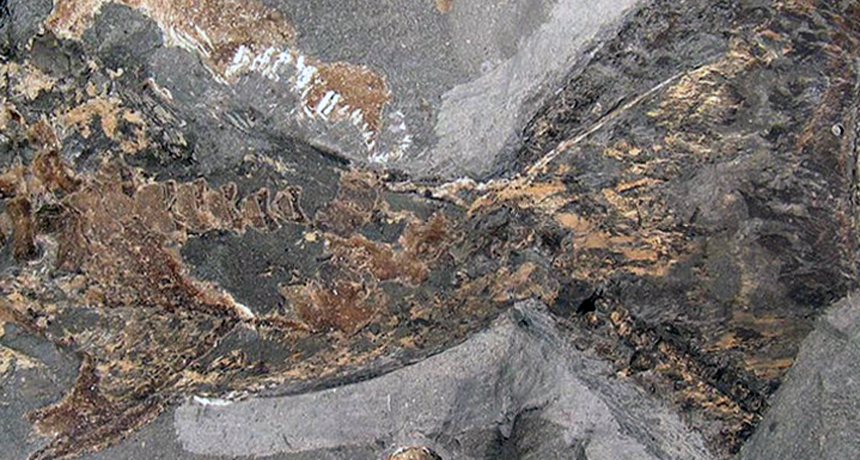Extinct ocean reptiles now appear in color

Dark patches in the fossilized tail fin of a nearly 200-million-year-old ichthyosaur show traces of skin pigmentation and suggest that the animal had dark coloration covering its entire body.
Johan A. Gren